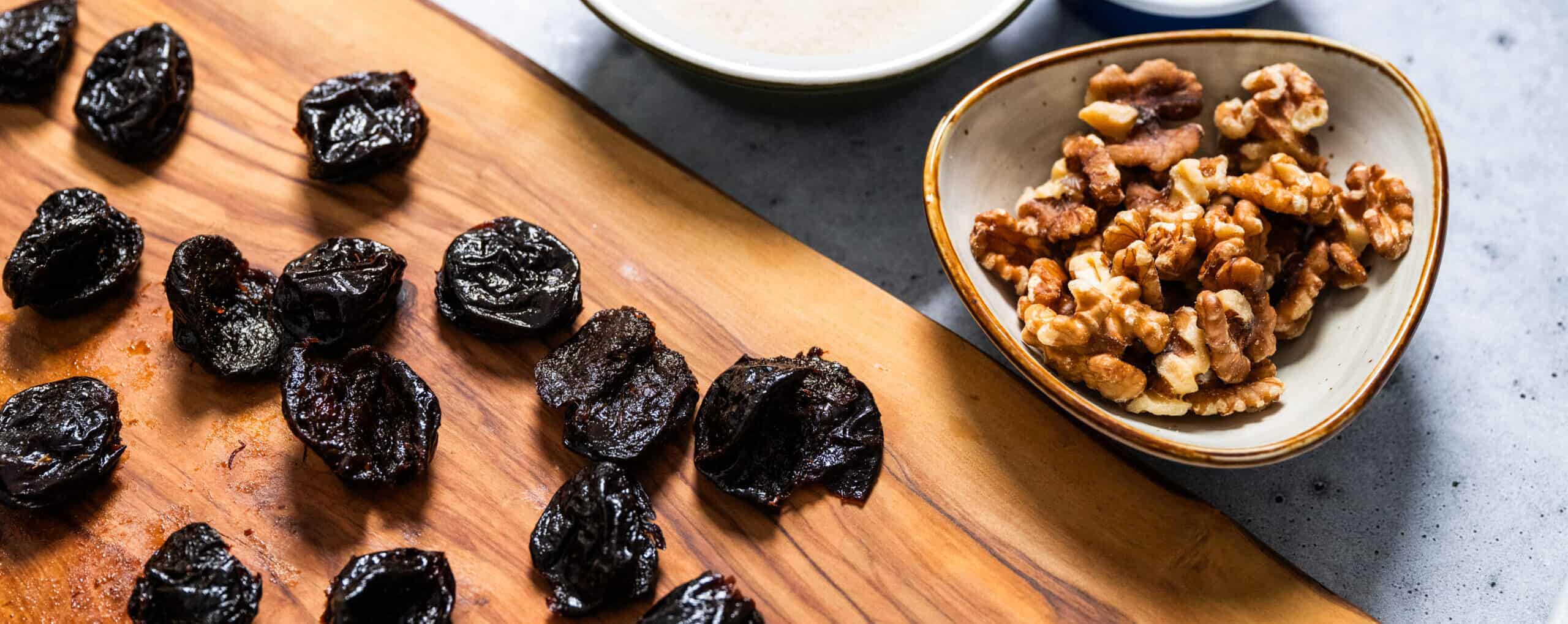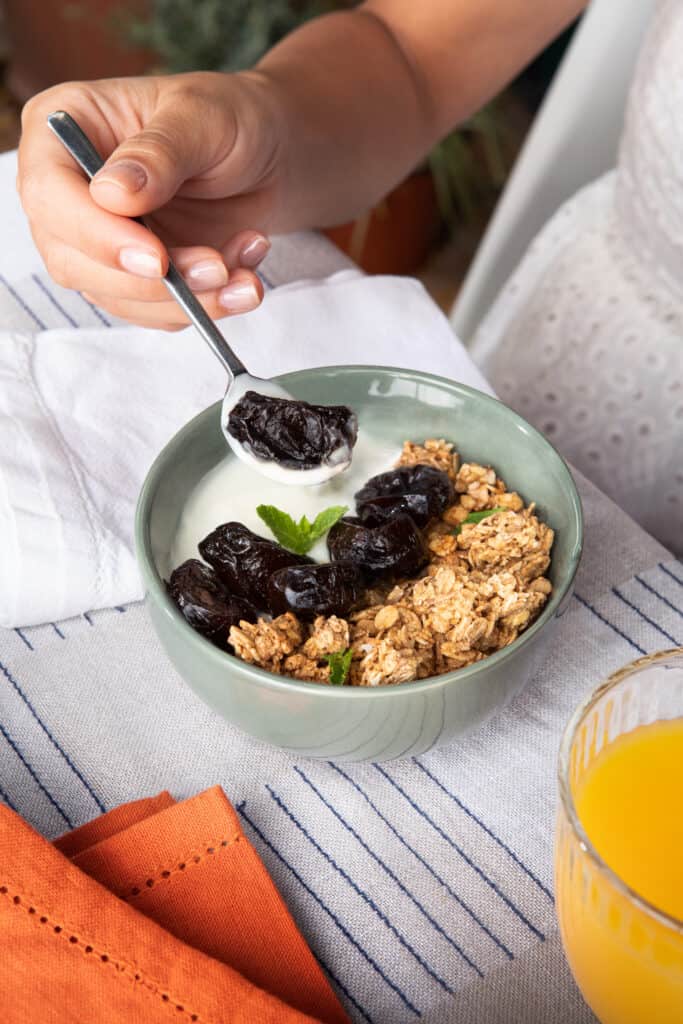
The Gut Microbiome-Bone Health Connection and a Role for Prunes
If it seems like news about the gut microbiome is everywhere, it’s because it is. Keen interest continues in the developing science around the many factors – including dietary patterns – that can affect the composition of “good” and “bad” microorganisms living in the intestinal tract and their potential role in health promotion and disease prevention.
Creating a microbiome environment that promotes the growth of “good” microorganisms requires a diet filled with fiber-full vegetables and fruits, such as prunes. Research funded by the California Prune Board (CPB) is exploring the relationship between regular prune consumption and a healthy gut with an additional area of interest: A healthy gut microbiome’s effect on bone density.
Microorganisms and the Microbiome
It has been well established that all humans have an unconscious, symbiotic relationship with innumerable numbers of microorganisms that live in the body. While science, to date, has shown that certain microorganisms benefit human health, we are still just beginning to understand the myriad interrelationships between microorganisms and humans.
Prunes provide important vitamins, minerals, antioxidants and phenolic compounds to the diet — including 11% of the daily value for fiber, a food source that promotes the growth of “good bacteria” in the gut. This contributes to an increase in microbial richness, which is thought to benefit human health.
The CPB has been funding research to examine how prunes can favorably alter the gut microbiota. Specifically, recent research has investigated how intestinal fermentation creates the optimal environment for good bacteria to thrive in the gut, and how short-chain fatty acids are the preferred food source for the cells lining the gut. By altering the microbiome environment, this can also result in a domino effect of other positive health outcomes, and additional research can help connect the dots to other potential health benefits of prune consumption and an improved microbiome environment.

The Gut-Bone Connection
Another emerging area of research involving the gut microbiome is on bone integrity. The term “osteomicrobiology” has been used to characterize this relationship. Specifically, it refers to investigations on the role of microbes and microbiota in health and disease and the mechanisms by which the microbiota regulates post-natal skeletal development, bone aging and pathologic bone loss.[1] The CPB is currently funding research that explores that effect of prune consumption on the gut microbiome and its effect on bone density.
While these studies are only preliminary, the findings are promising and add to our understanding of the unique nutrient and health benefits of eating prunes. For around 100 calories, a serving of 4-6 prunes is a nutrient-dense superfood providing more than 20 different vitamins, minerals and plant compounds to the diet. As a fruit enjoyed across cultures and ethnicities, research into prunes’ health benefits contributes to a better understanding of their role as a dietary tool to promote health and potentially lower chronic disease risk.
Learn more about current and future nutrition research on prunes.
References:
[1] Jones RM, Mulle JG, Pacifici R. Osteomicrobiology: The influence of gut microbiota on bone in health and disease. Bone (2018) 115:59–67. doi: 10.1016/ j.bone.2017.04.009